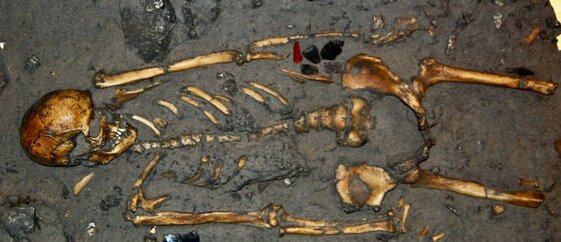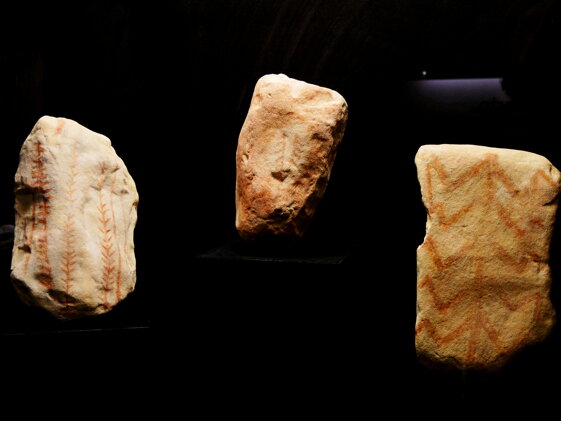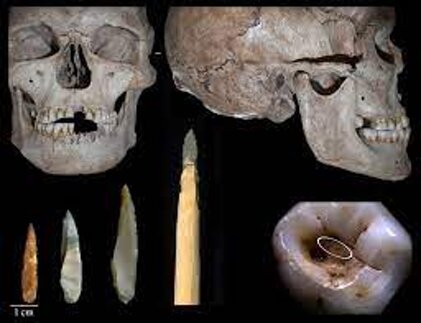© 2024 Tramedistoria Impresa Sociale
The discovery
Although the museum does not currently contain any original artefacts, it provides an engaging and accurate description of the context thanks to nine rooms in which reconstructions and faithful copies of archaeological finds are exhibited and films are shown to recreate the atmosphere and gestures of 14,000 years ago in a philological and evocative manner. Other films give the word to the protagonists of the discovery, excavation and investigation to tell in first person the stages of the archaeological research.
The museum tells us about the first humans that populated the Alpine chain and, thanks to the burial of the Man of Val Rosna who lived 14,000 years ago, shows us the life and beliefs of the hunter-gatherers Sapiens who lived in the Alps in the final stages of the last Ice Age.
It was 1987 when Aldo Villabruna found, in a construction site in the municipality of Sovramonte at the confluence of the Rosna and Cismon rivers, remains of human bones and an arrowhead dating back to the Epigravettian, the last phase of the Upper Palaeolithic.
The news astonished the scientific world and the University of Ferrara began an excavation campaign that brought to light three shelters that exploited the rock face, frequented repeatedly during prehistoric times. To the first frequentation, dating back 14,000 years ago, dates the burial of a hunter aged 25/30 years old covered with painted stones: one of the oldest known forms of funerary art.

The burial

The inhumed man, incomplete from halfway down his femurs, was lying supine in a deep grave with his body reclining to the left, towards the wall of the shelter. On his left forearm was placed a pouch with a bone tip decorated with carvings, some flint tools (a knife and a blade) a flint core, a pebble of siltstone used as a retoucher, and a piece of resinous substance, possibly mastic.
The burial was covered with stones collected from the surrounding streams, some of which were painted with red ochre.

Art and ritual
The painted stones that covered the burial consist of three large pebbles laid with the painted side facing the deceased, depicting a dancing man, some linear bands, and two deer antlers. Another flat stone, with the painted part facing upwards and visible to those entering, shows in a stylized manner a hyperanthropic figure (a man with many arms) probably indicating his great strength. This painting functioned as a tombstone indicating the presence of the grave; the same purpose was probably served by the six ochre bands still visible on the walls of the shelter in correspondence with the tomb.

The first patient for the first dentist
The Man of Val Rosna boasts the oldest known case of dental treatment: the removal of caries from the wisdom tooth.
An exceptional discovery that has travelled the world and has been published in leading international scientific journals, to which the museum tour gives the prominence it deserves.
© 2024 Tramedistoria Impresa Sociale